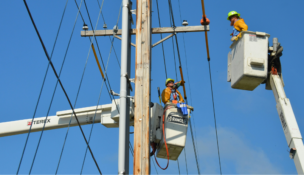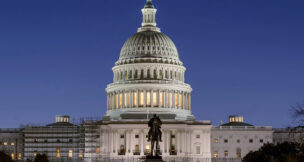New rule requiring rear passenger seatbelt warnings has no teeth
Marc Lamber, Guest Commentary//January 8, 2025//[read_meter]
New rule requiring rear passenger seatbelt warnings has no teeth
Marc Lamber, Guest Commentary//January 8, 2025//[read_meter]
The National Highway Traffic Safety Administration (NHTSA) has finalized a rule requiring all new passenger vehicles to include visual and audible seatbelt warning systems for rear seats and enhanced warnings for front seat occupants. This mandate aims to address seatbelt usage among rear-seat passengers, who have historically shown lower compliance rates compared to front-seat occupants. The rule is set to take effect for front seat warnings on September 1, 2026, and for rear seat warnings on September 1, 2027.

As an Arizona personal injury attorney with over 30 years of experience, I’ve witnessed firsthand the life-saving impact of seatbelt use. It’s a simple action that dramatically reduces the risk of injury or death in vehicle accidents. Yet, despite widespread awareness, some individuals still neglect this crucial safety measure, leading to preventable tragedies.
The statistics are compelling:
- Seatbelts reduce the risk of death by 45% for front-seat passengers in cars and by 60% for those in SUVs, vans, and trucks.
- In 2022, 42,795 people died in motor vehicle crashes in the U.S., and nearly half of those who died were not wearing seatbelts.
- Rear-seat passengers are three times more likely to die in a crash if they are unbelted compared to those who buckle up.
Recently, our state took significant steps to enhance seatbelt safety. The state now mandates that all front-seat occupants and passengers aged 8 to 15 in all seating positions must wear seatbelts. However, there is currently no statewide requirement for adult rear-seat passengers (ages 16 and over) to wear seatbelts. This means that, presently, adult rear-seat passengers are not legally obligated to buckle up, although it is strongly recommended for safety.
The NHTSA’s new rule requiring seatbelt warnings for all occupants coupled with Arizona’s current seatbelt requirements are steps in the right direction. However, they lack teeth. Under Arizona’s current law, seat belt violations are a secondary offence, meaning a police officer can only issue a ticket if the driver is pulled over for a primary violation. Just as Arizona made using one’s cell phone while driving a primary offense, drivers should face the same jeopardy for failure to buckle themselves and make sure their passengers are buckled up.
While Arizona’s recent legislative efforts are commendable, there remains room for improvement. Implementing a requirement for all occupants, regardless of age or seating position, to wear seatbelts would further enhance safety. Some may view these measures as overreach, arguing for personal freedom. However, the right to personal freedom must be balanced against the collective responsibility to protect lives. The inconvenience of buckling up pales in comparison to the potential consequences of not doing so.
The path forward is clear. We must continue to advocate for comprehensive seatbelt use, support legislative measures that enforce this practice, and embrace technological advancements that promote safety. By doing so, we can move closer to a future where preventable injuries and deaths on our roads are a rarity, not a common occurrence.
Marc Lamber is a Martindale Hubbell AV Preeminent-rated trial attorney and public safety advocate. A director at the Am Law 200 firm Fennemore, Lamber chairs the Personal Injury Practice Group.


















